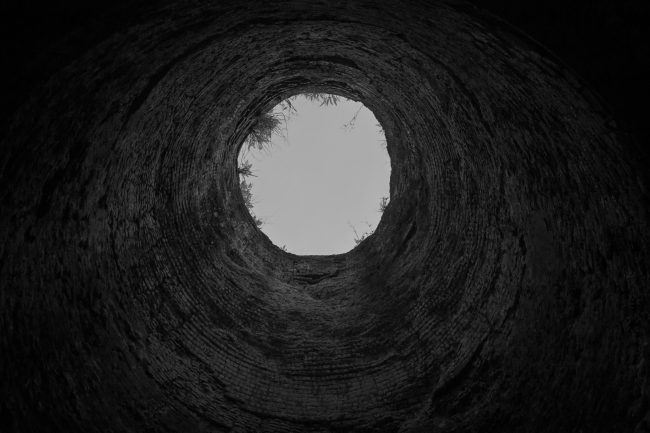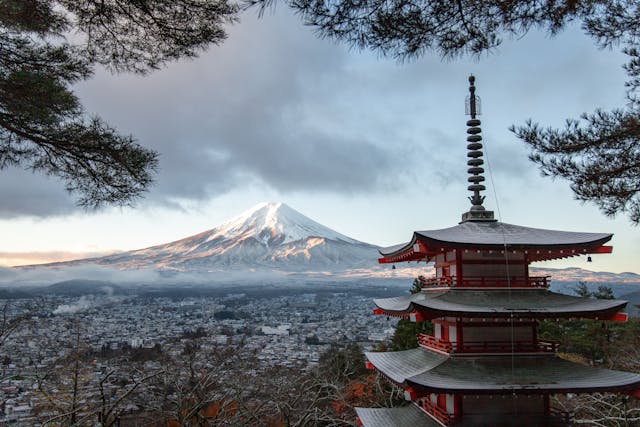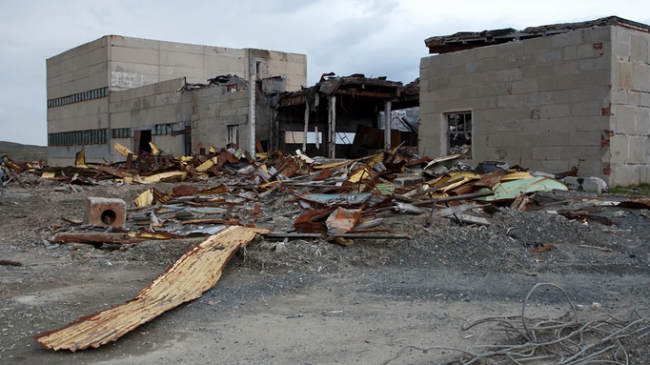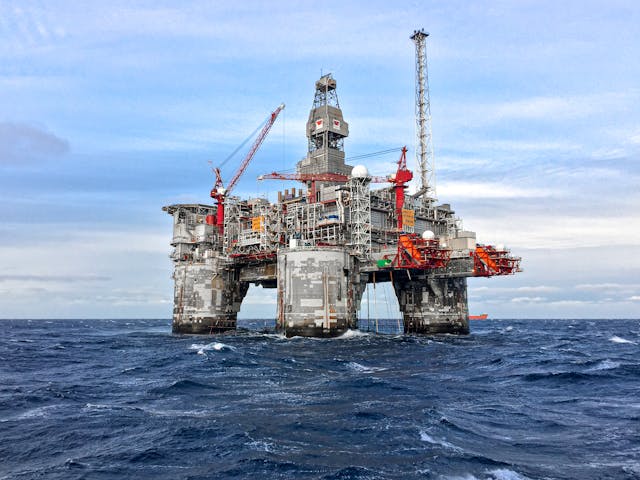Here’s What Lies at the Bottom of the Deepest Hole on Earth
Imagine drilling a hole so deep that it could reach hell itself…or so people say. That’s what the Soviets did here, deep in the Arctic Circle. They drilled the deepest hole on Earth.

In this remote area teeming with misty lakes and dense forests, lies an abandoned Cold War Research facility that houses the deepest hole on Earth, extending 40,230 feet (12.2Km) deep into the crust of the Earth.
Microphones lowered inside captured haunting screams from underneath.
After drilling for 30 years, the Russians suddenly stopped and abandoned the project. Why? And why would they start drilling it in the first place? Let’s find out!
The Kola Superdeep Borehole – Deepest Hole on Earth
Tucked away beneath the rubble of an abandoned Soviet research facility just outside the Norwegian border and near the Barents Sea, you’ll find a rusty, unassuming metal cap bolted tightly into the concrete floor. Few know that this unremarkable hatch – only about 9 inches (23 centimeter) in diameter – seals away the Kola Superdeep Borehole. This is the deepest hole humans have ever drilled into our planet.
To visualize how deep it is, imagine Mount Everest and Mount Fuji stacked on top of each other. The hole also surpasses the Mariana Trench, at over 36,000 feet (11,000 meters) beneath the ocean surface.

The drilling took years. It began in May 1970, with scientists aiming for about 9 miles. By 1979, they’d already surpassed all existing drilling records of those times, reaching depths beyond the 6 mile mark.
In 1989, the drilling finally reached its maximum depth of 40,230 feet (12,262 meters). At this point they had to stop because they encountered something unexpected.
It’s so hot down there the deepest hole on Earth
When Soviet scientists reached 40,230 feet, they hit a scorching temperature of 356 Fahrenheit degrees (180 Celsius) coming from the Earth’s mantle. This incredibly-high temperature was basically turning the surrounding rock into something that behaved more like heated plastic, which would damage the drilling equipment, and also make the borehole unstable.
Maintaining drilling under these conditions became nearly impossible and the project was abandoned in 1992.
Finally, in 2008, the borehole was sealed off with nothing more than a rusted metal cap. If you visit Murmansk today, chances are you’ll miss the rusted hatch amidst the abandoned ruins of the site.
But why dig so deep?
We dig huge holes into the Earth for many reasons- most commonly to extract valuable resources like fossil fuels and metals. Consider, for instance, the famous Bingham Canyon copper mine near Salt Lake City—a massive open pit that dives three-quarters of a mile (1.2 kilometers) deep and measures around 2.5 miles (4 kilometers) across.

But humanity’s interest in digging deep into the Earth doesn’t stop at mining resources. Scientists drill deep into the Earth to better understand natural phenomena like earthquakes, volcanoes, geothermal energy and even climate patterns. These deep holes allow us to learn more about Earth’s history as a planet, and how it’s evolved over millennia.
So, during the time of the Iron Curtain, there was a fierce competition between nations to reach the Earth’s mantle.
The mantle is the thick middle layer of our planet, sitting between the crust and the core. To visualize it, think of the Earth as of an onion: its outer layer, or crust, is roughly 25 miles thick (or 40 kilometers). Below that lies the mantle, extending about 1,800 miles (2,896 Km). Beyond the mantle is the outer core, which continues for another 1,400 miles (or 2,250 Kilometers) until reaching Earth’s inner core – a hot, dense ball made mostly of iron, approximately 758 miles in radius (or 1,220 Km).
What’s so special about the Earth’s mantle
The mantle plays a crucial role in shaping the planet we live on. Its continuous movement triggers earthquakes, volcanic activities and even pushes up mountains.
For example, heat rising from Earth’s core passes through the mantle, leading to phenomena such as volcano eruptions and geothermal energy. What is more, the mantle is believed to contain huge reserves of valuable minerals, metals and even diamonds. By understanding this mysterious layer, we can discover how Earth came into existence and how it evolved over billions of years.
There are some places on Earth, like in Oman, where pieces of Earth’s mantle have surfaced naturally, allowing scientists to study them without drilling deep holes. This unusual phenomenon is known as obduction, and it is caused by parts of the mantle getting pushed upwards onto Earth’s crust instead of sinking downwards.
These pieces of exposed mantle are called ophiolites, and the Samali Ophiolite in Oman is really special. However, this exposed mantle has its scientific limitations. First of all, these exposed mantle rocks are millions of years old, and have been significantly altered after being exposed to surface conditions for so long.
Therefore, the Soviet research teams that started drilling towards the Earth’s mantle went after fresh, real-time samples from deep underground. The difference between studying surface mantle and fresh mantle is like the difference between examining dinosaur fossils and having an actual live dinosaur available for study.
A race to the center of the Earth
If you’re a grandpa now you probably remember the excitement of the space race of the Cold War era, when the United States and the Soviet Union competed fiercely to put humans into orbit and onto the Moon.
So, at the same time, beneath the radar of public attention, another equally ambitious competition was underway – pointing downward, toward the mysterious heart of our planet.
The Soviets were not the only ones attempting to reach the Earth’s mantle. The Americans, and the Germans also competed in this underground rivalry to drill the deepest hole on Earth.
These super-deep borehole projects were monumental undertakings – full of uncertainty, groundbreaking technologies and challenges that can be compared to those faced by astronauts on their journeys into space.
However, unlike in the Space Race, the Americans didn’t come out on top. And maybe that’s the reason this dramatic story isn’t as widely celebrated as Neil Armstrong’s famous first steps on the Moon.
But make no mistakes, the rock samples brought back from these depths were no less significant than the moon rocks collected by NASA astronauts.
The Americans lost
The United States fired up the first drill in the late 1950s. The project was called Project Mohole, named after the Mohorovičić discontinuity, which marks the boundary separating Earth’s crust from the mantle beneath.
To shorten their journey to the mantle, American scientists chose to drill through the ocean floor near Guadalupe, Mexico. Drilling through the ocean’s floor was not a bad idea because this is where the Earth’s crust is at its thinnest. BUT there was also a major drawback – the thinnest crust lies beneath some of the deepest parts of the ocean.
With financial backing from the National Science Foundation, the Americans successfully drilled about 601 feet into the ocean floor. But in 1966 – two years before Neil Armstrong would famously walk on the Moon – Congress pulled the plug on Project Mohole as the costs ballooned out of control.
In the end, those few meters of basalt rock they pulled out cost around $40 million in today’s money.
Germany also joined the drilling race in 1990, aiming to outdo the Soviets in drilling the deepest hole on Earth.
Their Continental Deep Drilling Program began in Bavaria and eventually drilled down to only 5.6 miles (9 Km). They couldn’t reach their ambitious target depth because their drilling site turned out to be much hotter than the Soviet one.
It is very difficult to dig so deep
It took the Soviets an incredible 30 years of hard work to drill nearly 7.6 miles; yet even after all that effort, they only managed to go about a third of the way through Earth’s crust towards the mantle.
And although the Kola Superdeep Borehole is the deepest place on Earth, it still only reaches a mere 0.2% of the way to the Earth’s core.
Just like in the case of the space missions, scientists and engineers had to invent completely new technologies from scratch.
For example, when Project Mohole began drilling into the ocean floor back in 1961, deep-sea oil and gas drilling technologies hadn’t been developed yet. Engineers had to get creative and come up with essential tools such as dynamic positioning, which is used today to hold drilling ships steady above the seabed. Instead, they installed special propellers on the sides of their drillship to keep it steady.

When the Soviets started drilling at Koala, everything went smoothly as they passed through the granite layers. But at around 4.3 miles, things changed. Rock layers got much tougher, breaking drill bits and forcing engineers to change their drilling plans again and again.
Dealing with extreme heat
Then, as they went deeper, the rock grew hotter – far hotter than anyone had anticipated. When they reached 7.5 miles, the temperatures soared to 356°F and tough rock turned into something like gooey plastic.
Despite these challenges, the Soviets continued for 3 more years, but never got any deeper than that. Moreover, it was after the collapse of the Soviet Union, and the funding for such ambitious projects dried up really quickly.
The German drillers faced similar troubles. Their biggest issue was drilling perfectly vertical. If the hole wasn’t perfectly straight, drills could easily break under torque. So the technology they developed to drill vertically became the gold standard in oil and gas drilling worldwide. But even this system had its limits, as their borehole drifted nearly 200 meters (656 feet) off-course in its final stages.
What did they discover down the deepest hole on Earth?
Before it was shut down, the Kola Superdeep Borehole project provided some fascinating discoveries.
Right from the start, the extreme temperatures down there surprised scientists, surpassing all their expectations.
But perhaps the biggest surprise was what the drill didn’t find. Scientists had long expected that, around 3 to 6 Km (3,200 – 19,000 feet) beneath our feet, the crust’s rock type would shift from granite to basalt – something known as the “Conrad discontinuity”. Seismic studies had pointed to this boundary under continents all over the world. Yet, at the Kola Superdeep, granite continued for more than 12 Km down.
This discovery forced scientists to reconsider their seismic observation methods. It turns out the signals detected from the surface of the Earth are not indicating a change of rock type. The Kola borehole gave geologists a great opportunity to test their theories about the structure of the Earth.
Even more exciting was the discovery of ancient life far below the surface. At 4.4 miles (7 Kilometers) deep, they found microscopic fossils of single-celled marine organisms that lived 2 billion years ago.
Is it possible that life once thrived deep in the bowels of our planet? Perhaps.
Another unexpected phenomenon they encountered was the presence of massive amounts of hydrogen gas rising from below. This drilling “mud” appeared as if it was boiling due to this hydrogen.
This gas likely formed through serpentinization – a geological process where deep, hot water alters the chemical structure of certain minerals, releasing large quantities of hydrogen gas.
Each of these discoveries show how much remains unknown about our own planet, the very Earth beneath our feet.
And there was more.
Harrowing sounds from Underneath the Deepest Hole on Earth
In 2013, Dutch artist Lotte Geeven had no idea what she’d encounter when she lowered a microphone down the KTB superdeep borehole located near the German-Czech border. This borehole, part of the German Continental Deep Drilling Program, reaches nearly 9 Kilometers (30,000 feet) into the Earth’s crust.
Of course, this was no ordinary microphone. Geeven’s team used special geophones and ultrasonic sensors that picked up some very weird vibrations and sounds. They later translated them into audible frequencies.
These recordings revealed a deep, rumbling sound coming from within the Earth. Some listeners likened the sounds to “hell”, while others felt they could hear the planet “breathe”.
China has begun drilling a hole of their own
In 2023, China announced an ambitious plan to drill more than 11 kilometers into Earth’s crust, hoping to uncover the mysteries hidden beneath our planet’s surface.
This drilling project began in a desert in the remote Tarim Basin of China’s northwestern Xinjiang region. The plan is to pass through more than 100 layers of continental rock, eventually reaching strata formed during the age of the dinosaurs, roughly 145 million years ago.
Even though a few decades have passed since the Kola Superdeep Borehole project was abandoned, digging this deep is still far from straightforward. You need massive equipment, weighing over 2,000 tonnes, which must survive underground temperatures of up to 200 degrees Celsius (392 Fahrenheit), and pressures more than a thousand times greater than on the surface of the Earth.
Xinjiang itself holds enormous potential; the region is rich in minerals, oil and gas reserves. Moreover, one of China’s largest oil refiner previously discovered important oil and gas deposits there, at depths beyond 8.5 Km (20,000 ft).
Can we go deeper in modern times?
Eventually yes, but not quite yet. Pushing beyond the current record of around 12.2 Km (7.6 miles) comes down to two main challenges: managing extreme underground temperatures and maintaining the borehole structural integrity.
But, despite these challenges, human curiosity will continue to push the boundaries of what’s possible. With rapidly advancing technology and our relentless desire to explore, it might not be long before we venture even deeper beneath our feet.
